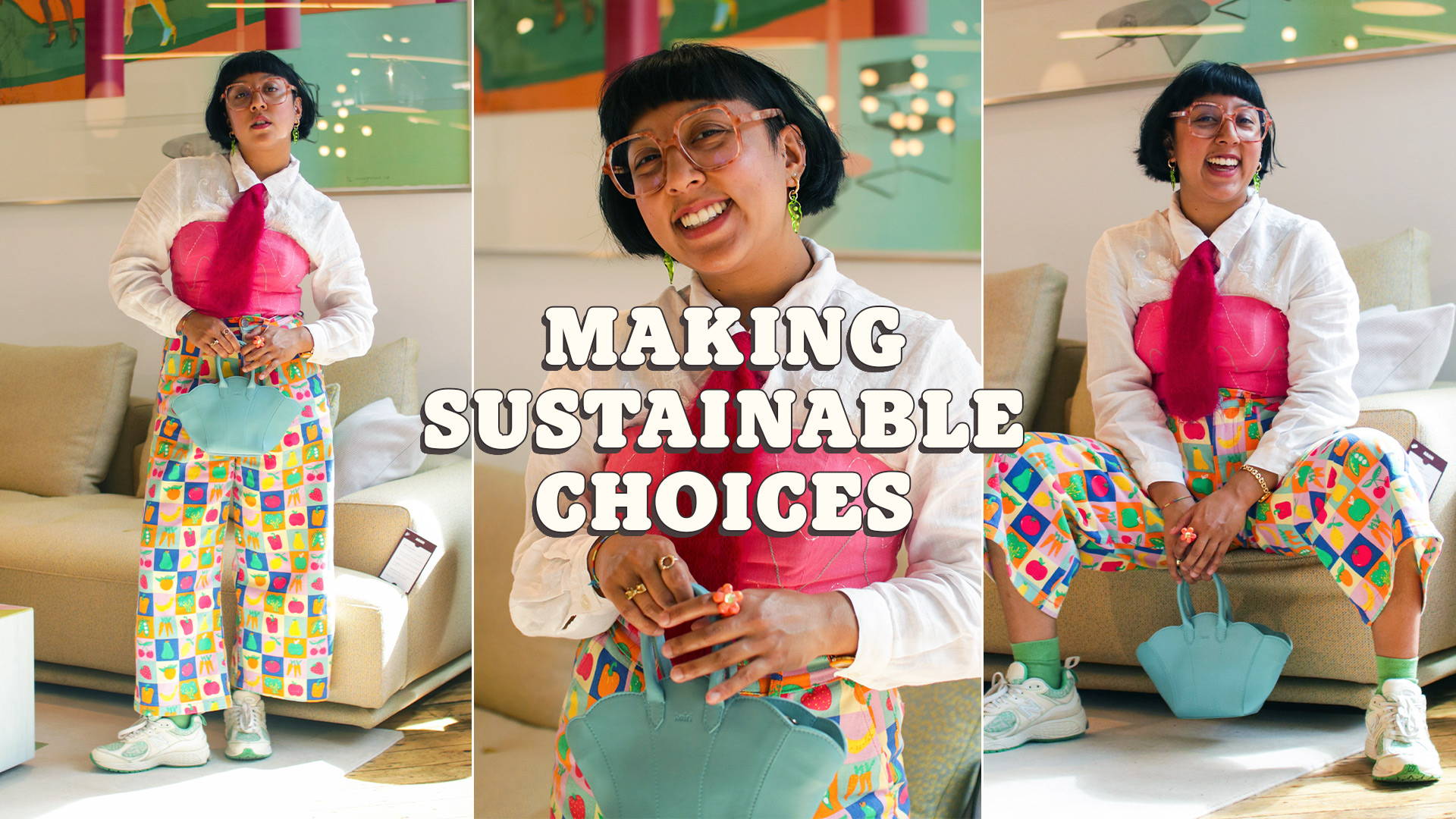
Making Sustainable Choices:
A Guide to Buying Better
Making Sustainable Choices: A Guide to Buying Better
by Izzy Manuel
Sustainable fashion is kind of becoming a buzzword, and it can be REALLY overwhelming to work out what a sustainable wardrobe really is and how to create one, so this is my guide to taking those small steps in creating an imperfect sustainable fashion wardrobe.
Sustainability is all about the people and planet, every second a rubbish truckload of clothes is sent to landfill or destroyed here in the UK and that fact is somewhat ingrained in my brain because it is CRAZY. (1) The issue with items ending up in landfill is that depending on what they are made of, they can stay in landfill for 100s to 1000s of years. (2) Sustainable fashion is all about making more sustainable choices and also creating a wardrobe that makes you want to keep on rewearing each and every item.
These are a few things I think about when it comes to creating a slow-fashion wardrobe:
1) Will I wear this item at least 30 times and is it an item I can wear for different occasions in different way?
The versatility of an item is so important and I think it’s one of the key things that make us want to rewear an item. The sustainable item is the one you already own so keep on rewearing and restyling!
2) What is it made from?
Whenever I buy something new I always look at the label and look at the fabric composition, for example, GOTS-certified organic cotton. It’s so much better for the planet and soil health, plus natural, materials always feel nicer on the skin in my opinion. I also look out for certified recycled materials such as GRS-certified recycled polyester because certified recycled materials mean they are truly recycled materials that would have just potentially ended up in landfill.
3) Buy less buy better
I think is truly one of the best sustainability tips out there. We need to be buying less but when you do buy, choose better quality items made from high-quality materials that are made to last. Then if you fall out of love with an item, you can give this item a new lease of life by swapping, upcycling or selling!
So what about the items you no longer love? I just want to normalise that we all fall out of love with items in our wardrobe every now and then because our styles change as our personalities grow and progress. Every month I go through my entire wardrobe and pick out items that I no longer reach for and look to either resell or give them away to friends and family, because keeping clothes in circulation is the most sustainable thing you can do. This is where the Re:Yak scheme is perfect, it is a great opportunity to give Yaks you no longer reach for a new lease of life. The Re:Yak initiative is super easy, all you need to do is drop off to any unloved Yaks to a Lucy & Yak store and you will receive a gift voucher that you can either use online or in-store. It is also a great opportunity to practice the one-in-one out method. This is where you only bring something new into my wardrobe if you give something else a second lease of life.
Okay, so the most important when it comes to building a sustainable wardrobe is looking after the clothes you already own. Always check the clothing care labels to see how to wash your items. I wash all my clothes at 20°C with an anti-bac additive, lower temperatures still clean your clothes so you don’t need to worry about your clothes being stinky! Another skill that I am so grateful that my mum taught me is basic sewing skills and repairs, she taught me such simple hand stitches to close up holes and it has been a skill I have been so grateful to have. The more we wear our clothes, the more likely some wear and tear, so checking out some YouTube videos and learning basic repairs is something I would always recommend. If you have some pieces that might be a little beyond home repair (we all have those Yaks that we have worn to death) Re:Yak Studio scheme keeps those pieces in circulation where Cat who is a magician, upcycles and repairs Yaks to create one of a kind pieces which you can buy in store!
Last but not least, what about charity shops? Of course, I love a charity shop, I think they are the bread and butter of shopping more sustainably. When it comes to donating to charity shops, make sure that you only donate high-quality items, we’re talking no stains or holes because this helps ensure the items stay on the shop floor rather than being sent to the global south (which is a massive issue with clothing donations.) (2)
Ultimately, some last words of wisdom, sustainable fashion is all about looking after the pieces you already own and when you do buy, buying less and buying better. Sustainable fashion should feel empowering and fun and it doesn’t have to be boring!

